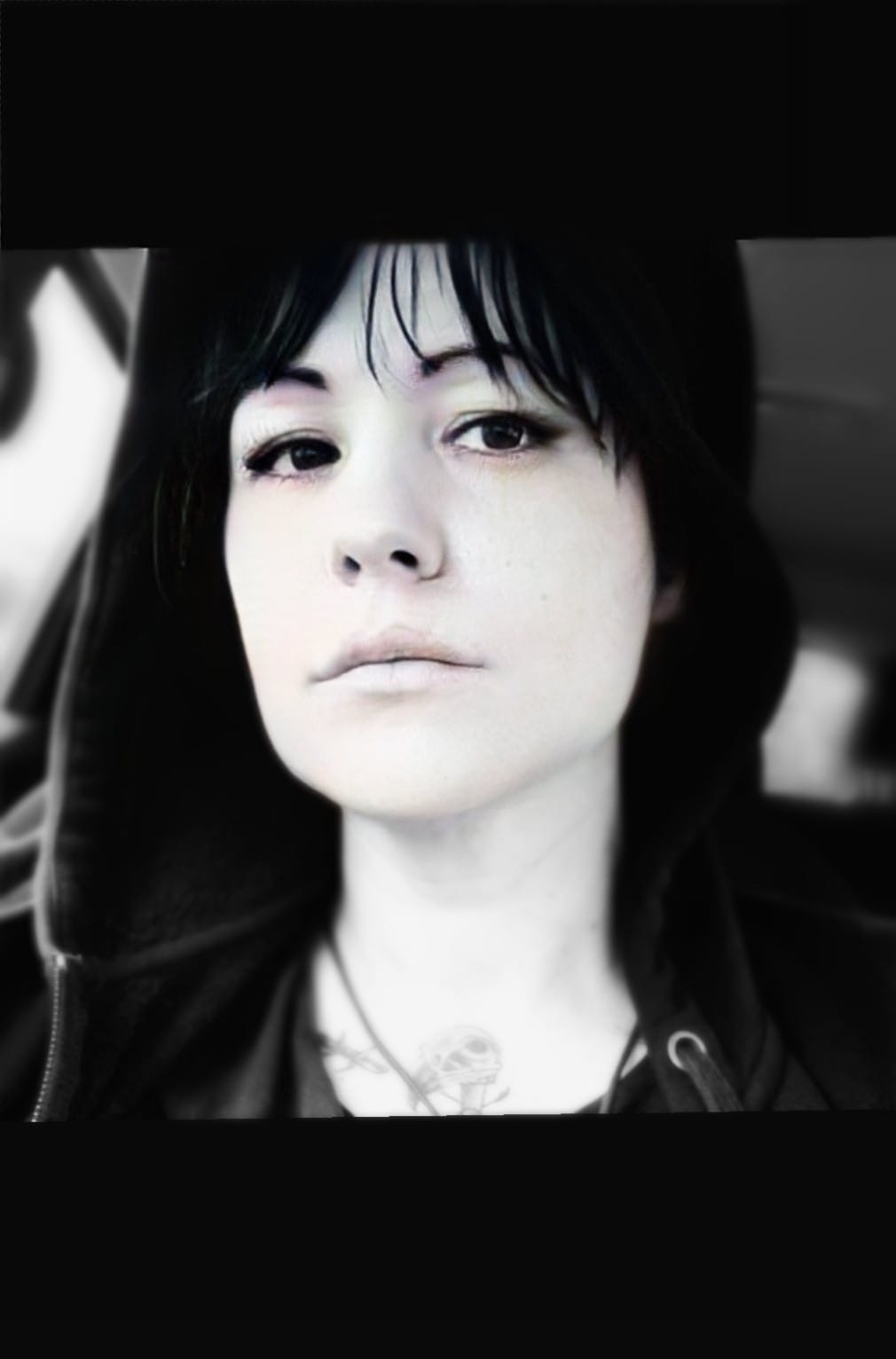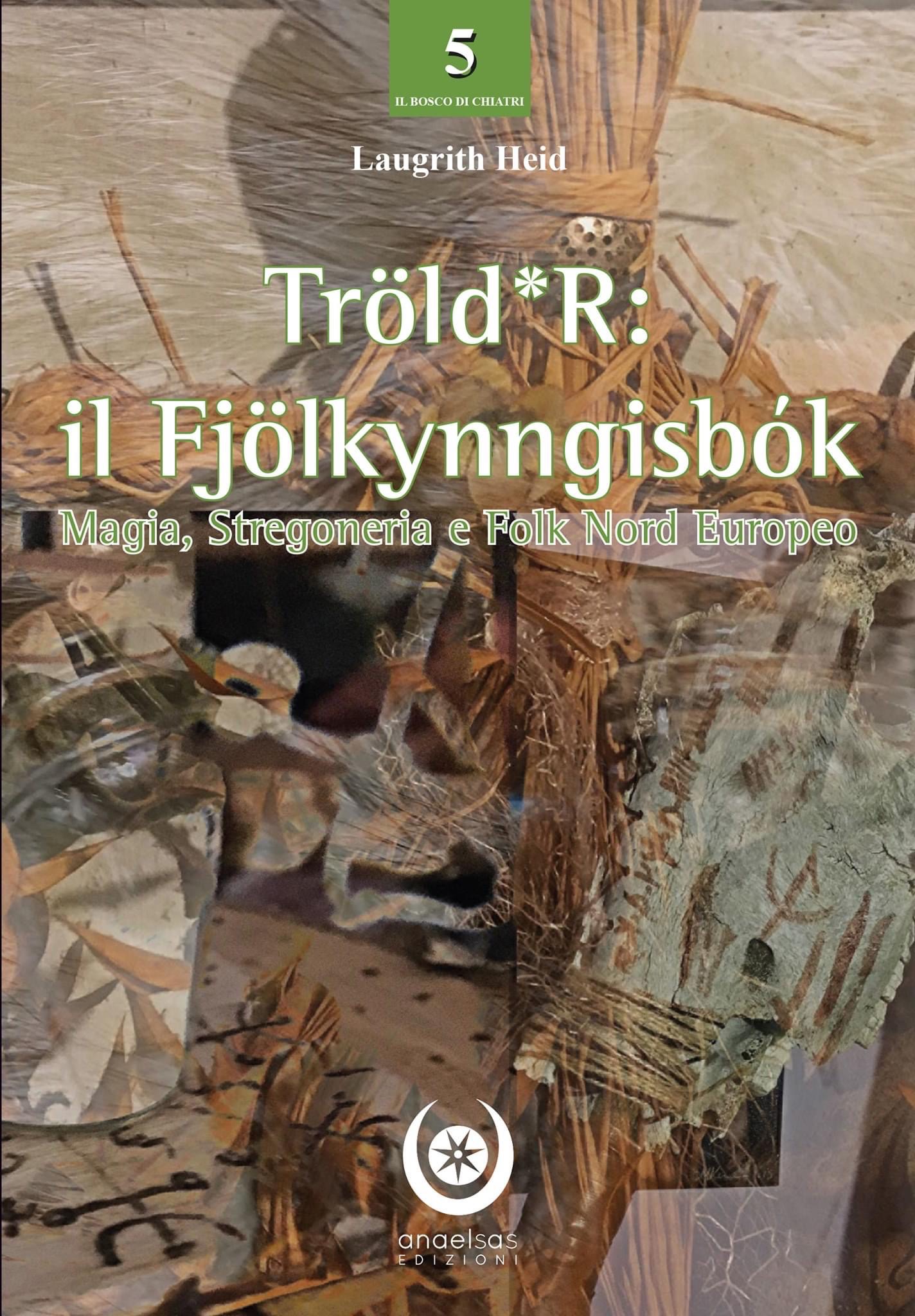Please introduce yourself, your organization and major activities from Italy for our audience.
Hail, Askr!
Let me introduce myself: I am Ylenia Oliverio, aka Laugrith Heid, and I am an Italian archaeologist who has been practicing esotericism for about 25 years. I started my journey with Goetia and Demonology. Between 2012 and 2013 I founded an association recognized by the Italian state in the sector of polytheistic worship. Between 2013 and 2014, I focused attention on the Scandinavian area, founding Vanatrú Italia, starting from the runological processes linked to the Giants’ seed, their occult matrix, and Scandinavian witchcraft.
I have carried out research published in 5 Italian volumes, published by Anaelsas. In these, I delineated the processes for partially recovering this indigenous European cult, focusing attention on the Vanir and the Jötnar.
These are the texts:
- Laugrith Heid, La Stregoneria dei Vani, Anaelsas edizioni.
- Laugrith Heid, Kindirúnar, Le Rune della Stirpe, Il Grimorio Necromantico, Anaelsas edizioni.
- Laugrith Heid, Rún, i tre aspetti di una Runa, Anaelsas edizioni.
- Laugrith Heid, Helvíti Svarturgaldur, Manuale pratico di Opera Necromantica Nord Europea, Anaelsas edizioni.
- Laugrith Heid, Tröld*R: il Fjölkynngisbók. Magia, Stregoneria e Folk Nord Europeo, Anaelsas edizioni.
Now, we are working on our sixth volume, in which we will integrate both a reprint of the first volume and research on the Eurasian and Russian area.
Out of the foundation of the Vanatrú Italia group were later born specific study sections for the Cult of Hel, called Helpath, and the Jötnar Seed, where we focus on the cult of the Giants, in particular Surtr.
Our research shows the substantial importance of the link between the autochthonous deities and the Giants, Order and Chaos, Rebirth and Death.
You mentioned research on the Russian and Eurasian area; could you please say more about what exactly draws your interest in the Russian and Eurasian traditional heritage?
The Russian tradition, in particular, has an important historical and cultural background that is fundamental to understanding the esoteric and exoteric processes of each tradition. Russia harbors a deep historical identity (and popular one, as well) which has varied and changed over the course of its phases and which touches over the whole folk in question (keeping the conscience of the people). Reading these stages through historical documents and folklore is something unique and spectacular, it seems to live through the minds that have succeeded over time. Above all, the phase of myths and the Russian tradition encompass the essence of the Ars Stregona (Hydromany) in every aspect, which is related to the folk processes of the Scandinavian people. The bridge is unequivocal.
The Eurasian side allowed us to understand all this. Before arriving in Russia I went through the Eurasian demonological process to perceive and internalize the esoteric differences of such a strong and deeply rooted people (in their land).
You mentioned Surtr as one of the special figures of interest. I know one interesting opinion given by the German philosopher Ernst Jünger: in his diaries from the 1980s, he wrote that when the deadmen from Loki’s Naglfar come to the Vígríðr field, Surtr and his army will stand aside from them. He expresses the idea that Loki is still a bastard among the true and primordial giants like Surtr, and that they will not stand close to him or recognize his path and motivation to fight against the Gods as part of their own. So from there I have two major subquestions: how do you understand the difficult figure of Loki and his path, and the same question about Surtr too?
In Vǫluspá, a mysterious ship is mentioned which would have brought the giant army to the field of Vígríðr where Ragnarök took place: Naglfar, mainly made from dead nails.
Naglfar’s ship also appeared in an archaeological runestone: the Tullstorp Runestone in Scania, Sweden. The runestone featured Fenrir, the Giant Wolf, just above the Naglfar ship. So, Loki’s presence could be plausible. I know well and admire Jünger, and I know this theory found in his diaries.
I am an avid scholar of the German philosophical processes, which I include in courses for those who follow us. I studied philosophy, it is the basis of my academic training. As for Jünger’s fascination with beauty and ferocity, he can explain his love for the animal world and the theories relating to the relationship between knowledge and animal gnosis. The same philosopher places love, death and spiritual interiority expressed in art and poetry as forms to recover the way from modern nihilism. In this context we insert the theories about Loki.
Loki and the transmission of Lokian mimesis are the key to understanding Surtr and his lineage. In fact, Loki may appear to be a fighter in a battle that does not belong to him, but that (renewal) conflict was and will always be fundamental for the verification of Ragnarök. Without Loki and his mimesis there would be no Revolution, and Jünger has always known this. So, to understand the figure of Loki, you must always stick to the myth and its propensity for transmutation, and to understand Surtr you have to lean towards its peculiarities, that is the never-born and never-died. Loki is the link between Vanic witchcraft and Jötnar practices. This is a process that we call ritual mimesis.
What arguments could you name to prove that Hel is the true Goddess of the Death (if you recognize her as such a Goddess), since authentic sources tell us that she is not?
In my book HelVíti I trace the research that answers your question. I consider Hel the essence of the Giant, the mother of all sorcerer forms. I quote a passage from our fourth volume which I believe can clarify Hel’s role for our group:
«[…]
From the names and the accurate philological work, we have been able to trace the characteristics of the first Völva and the main form of the goddess Freya.
Vanidís brings together both the known Deities and the various merging and autochthonous elements, such as the Jötnar, the dwarves, the tröll, the vættir, the dragons and elves of both races. This aspect facilitates the possibility of transliterating the deities and Jötnar into the various elements mentioned. «
[…]
If we take the Völuspá 22, Hauksbók version, an adjective is mentioned in relation to the Witch: the shining one, which seems to create a close relationship with Gullveig, mother of all Witches:
Heiði hana hétu
hvars til húsa kom
völu velspáa
Vitti hún ganda
seið hún hvars hún kunni seið hún hugleikin
æ var hún angan illrar brúðar.
Heiður was one of the names of Freya as well, and with it there is the relationship with the Vanic Witches. Hence the link with Gullveig, but the interesting passage is the association with «treacherous and evil», almost related to the malevolent conception of the Devil, hence the link with Helvíti. Gullveig is the witch connected to the Necromantic tradition that we see in our practices. As mentioned many times, the Nerthus/Hel correlation is now consolidated, as Heiður is connected to Gullveig and to the characteristics of the Lady of all the Witches: Hel.
Following this excursus we can extend Freya’s manifestation to one of Hel’s manifestations. To intensify our hypothesis we have the term that is associated with Freya: Vanidís or Blótgyðja, the priestess. Since the term Gyðja is linked to the priestly figure, the union with Blót indicates the characteristic of sacrifice. Freya is the manifestation of Hel in a ceremonial and sacrificial act, in her manifestation during Ár og Friður, and Hel is the manifestation of Freya in Necromantic version.
[…]
As confirmation of what has been said, just take a step forward in the Völuspá hin skamma, which, although concentrating Christian beliefs and myth, provides us with a substantial element. From the Völuspá hin skamma (Hyndluljóð):
Eru völur allar
frá Viðólfi,
vitkar allir
frá Vilmeiði, seiðberendr
frá Svarthöfða, jötnar allir
frá Ymir komnir».
It seems that you focus mostly on the Vanir and Jötnar. Why on them and how exactly do you identify and distinguish them from each other? And, of course, what role do the Aesir play in the worldview you expound?
Our archaeological and philological research shows a strong link between the Vanir and Jötnar deities. My demonological formation pushed me towards the research for the visceral and autochthonous aspects, and its relationship with the chaotic part present in the European panorama.
Our Blóta work aims for the recovery of this light/shadow combination. Our courses focuses on the partial recovery of the «Fjölkyngi» through which the esoteric processes of our history move.
I have deliberately chosen to favor studies on autochthonous essences and chaotic powers by shifting my attention to δαίμων (Daimon) as the basis on which witchcraft knowledge is built.
The Æsir are an essential part of the cult. We treat them in a very veiled sense because we don’t belong to them. The social process of the Odinic myth, controlled and often taken up by the Vanic contexts, goes far away from us, because we are inclined to a more occult, visceral and pure «gnosis».
Could you explain the philological links between the Vanir and Jötnar? Why do you use the word «deities» for the giants? As we know from many traditions across the Indo-European peoples, they are always in opposition to the deities and divine nature, especially in the Germanic-Scandinavian tradition.
Part of the link can be found in the answer to the above question: there I tried to answer briefly about a concept found in years of research published in our volumes. I believe that the discordant elements between the Giants and deities are the historical product of the Abrahamic advance. It is the clear struggle between good and evil that Christians wanted (and want) to propose to us, where a God is only good and a Demon is only bad. The advancement of the Æsir is linked to the Indo-European people and, in fact, they reproduce all the dynamics opening the way to the Abrahamic phases.
As for the use of deity/divinity, I mean the divine essence, in a concrete sense of the term. This is an essence which, to be such, must contain chaos/death and harmony/life. On the other hand, God contains the summa deity or the absolutist conception of absolute evil or absolute good, which is inherent to Abrahamic concepts. In this sense, I maintain diversity with the term Deity.
You are describing a famous argument against the hard dualism that is present, for instance, in Zoroastrianism. But the Indo-European peoples and their form of dualistic (dvaita) worldview was completely formed many centuries before and many kilometers away from the Middle Eastern origin of Abrahamic morality (!) dualism in behavior. Of course we have examples of the Æsir and Jötnar collaborating or co-existing in the Eddas, or the same complex relationship between the Devas and Asuras in the Vedas, but the tension between these two poles of power is always extant.
Yes, the two polarities are evident: a little tacit agreement is relived, and the precise roles between creators and event-molders is trying to be “sectorialized.”
Zoroastrian dualism is of a metaphysical type, since the opposition is not between spirit and matter but between two spirits: on one side there is Mazda, the supreme God and maximum expression of good; on the other Mainyu, the evil spirit and creator of evil. The latter has a parallel power but of an opposite sign in comparison to «benign» intelligence, because it generates «non-life». Here we find a new intuitive form as well. The Demon is a generator of non-life, but this is still an act of creation that does not differ much from the root of the supreme intelligence. We witness something entirely similar in the processes in the Scandinavian myth of the eternal struggle/coexistence between Æsir and Jötnar.
To the ontological dualism regarding the sphere of being corresponds an ethical dualism: man can choose which one of the two he wants to follow. Therefore, the first successful example of the war of all time was launched within Zoroastrianism, between Good and Evil.
Among other things, everything that lives does so in a double existence, through an ideal creation (menog) and a concrete reality (geting).
The same universal order follows, according to Zoroaster, the vicissitudes of the rivalry between the two spirits: if separated in an initial phase they would have been forced to mix until a final separation.
The Greek concept of Daimon is far from the later Christian idea of the Demon/lower demonic essence. We recognize the Daimon as the God in between man and the Higher God (one of many, one which man can worship) or the inner conductor or guide from man’s Selbst to the divine Selbst, so it is difficult for me to associate the Daimon with the Jötnar and their sphere.
The concept of Daimon connected to the Jötnar sphere serves to relate the power of the Giants to men (especially to the witches of this faction). It serves us to understand the true essence of the Daimon (as an intermediary) and to go beyond what they have strongly inculcated and rooted in us for centuries, staining heavily all forms of European and non-European esotericism.
What do you mean by the terms «the social process of the Odinic myth» and what makes it, according to the end of your sentence, an «un-pure gnosis»?
The social process that I mean is the matrix of Odinic forms. In this sense, man is in relation to society, therefore to the rules dictated by a behavior that responds to the «correct» way to follow, in order to not harm others. So, we are more inclined to the occult root and internalization of the esoteric and exoteric processes that make a social aspect, linked to the visceral and the pure.
In this, we are far from the Æsir approach to social issues, that is a male figure placed at the top of a constantly precarious balance and managed by strength and masculinity. It is in this sense that I speak of a non-pure gnosis.
After all, the arrival of Indo-European man mixed forms and recreated new elements, nothing more interesting and contemporary, but for us not of significant importance for now.
The difference lies in managing the purity of the autochthonous root which then evolves and branches out in all esoteric forms. This is an understanding of the pure root and then erecting the structure without any precariousness.
How exactly would you describe such a phenomenon as the Left Hand Path, and what is the grand final goal of the whole spiritual journey that your path offers to its followers?
In our theosophical rereading, the Left Hand Path (LHP) is the basis of the primary processes of our witchcraft and demonological action, living in the processes of Ginnungagap (GinUr), which is the essence necessary to induce a rapid evolution of consciousness. It elaborates a relationship between the manifest and non-manifest that we find in the relationship between opposites that generate the binomial deity (Vanir) and Giant (Jötunn) as well, thus allowing the evolution of the phase of self-awareness that relives to every Ragnarök and that we often find claimed in the Myth of Loki.
We provide our students with a different view of Vanatrú from the old known contexts, since we managed to grasp the link between the Vanir and the Jötnar. We propose a wide-ranging demonological study that segments the same western demonology and demonolatry aiming at a Eurasian practice that is increasingly pure and free of Abrahamism.
As you are working with the Jötnar, I cannot avoid asking about ὕβρις (arrogance or greed in some versions). This attribute is always associated with the Giants and Titans, and this feature is one of the major differences between the Gods and the Giants (Gods do not have Hubris). So, how do you see this attribute in your work and how do you deal with it /how do you treat it?
Hýbris, ὕβϱις, as a topos of Greek tragedy as well as in literature, refers to the general qualification of an unjust and impious action that occurred in the past which produces negative consequences in the present.
It is a background that counts as an upstream cause, which will lead to the catastrophe of the tragedy. In our case it is associated with nemesis as reparative justice.
Regarding this, we have the greater part of the documents relating to the Titans. However, it should be emphasized that the Titans, like the Giants, are considered to be the primordial forces of the cosmos which raged all over the world before the regulatory and ordering intervention of the God (Zeus in the case of the Titans). Everything works in sync with what happens in our tradition, but it must be specified that this fault arises from an act that insinuates itself as a regulator of movements, something far from the matrix of Giants, much closer to the gods.
In fact, the concept of «the envy of the gods» would also be noteworthy.
In many tragedies (often also in our myth), in fact, it constitutes the narrative development that leads as a consequence to committing an act of hýbris, so our work examines every action that arose from a primary act and not derived from a «regulator» one.
Please tell us more about the Vanir in your system. Which do you glorify the most and why?
The Vanic Tradition takes up the rising and obliterating seed of the Giants, as the only guardians of the process of transmutation of the Self, which is concentrated, for example, in the practice of Seiðr, necromantic works, the Trolddmhöll and the Galdrastafir.
The majesty of the Vanic Witch is interposed in the current dynamic of necromantic discourses to snatch the threads of the destiny of every human being, as evidenced by the archaeological findings of the Oseberg Mound.
The priestess of Nerthus had these same dynamics; especially when we read the passage that mentions the return of the chariot to the temple, and the faithful who rush to the priestly debate.
Tacitus’ explanation, no matter how accurate, is always veiled by relationisms vis-a-vis his homeland.
So, the conversatio mortalium that Nerthus had on his return was with the defendants at the assembly, and the dialogue was essentially the necromantic practice of descent to the Gates of Hel, as is amply demonstrated by the same name to which the greek root of «He who descends into the realm of the dead» (NEPTEPOΣ), and as shown in the practice described in chapter 4 of the Eiríks Saga Rauða in the actions of the little / lesser Völva.
You have spoken a lot about witchcraft, magic and the practical side of the tradition. Why is this of such importance (for myself and Odinic path it is a very minor part of activities) and what fruits can it give in general to the practitioner?
Witchcraft, for us, is a salient part of the cult. It operates with its own experiential, empirical gnosis, which leads to the first phase of initiatory and mystery wonder of one’s own becoming conscious and aware. Syncretism between the Self, the shadow, the soul and animus; a continuous work of interchange, on a physical and etheric level, between matter and soul, between Blood and Verb.
We bring the practitioner to absolute inner knowledge and to their «memory», past «remembrance», to access the various stages of initiatory and formative consciousness. Witchcraft needs to re-emerge, to recover its role of communication between the worlds and the different planes of Yggdrasill.
So what place does the idea of the One – the Greek Ἕν – occupy in your worldview? Sadly, in English the word «one» always refers to the meaning of «single», but we are talking not about monotheism, but mostly about mystical monism (advaita in Hinduism).
The basic principle agrees with the vision of a supreme non-dual reality, but, unlike the Vedas, it is full of qualities or characteristics. In some ways, if we have to make a comparison, we also associate ourselves with Ramanuja’s (rebellious) vision: he does not accept the concept that a reality free from distinctions can be contemplated.
According to him, there can be no interest in something that is without characteristics. Thus, affirming the reality of something devoid of attributes or qualities is a contradiction in terms. This reality lives in the surrounding manifestations as the essence of what generates harmony and chaos, in a subtle balance that is often broken due to human stupidity, because man believes he can govern the regulatory aspects of the natural world.
You also mentioned Ginnungagap. Could you describe your understanding and definition of it and why it is so important?
The worldview that we present is very similar to the concept of Advaita in Hinduism.
It is very important because it embodies the essence of everything visible and non-visible, the manifest and non-manifest of Being understood as vivid reality.
It was the cosmic abyss that existed before creation. The exact incipit that, as stated in Gylfaginning, is the origin of the two matrices given by Niflheimr (from where the 11 rivers flow which are treated in most of our ritual works) and Múspellsheimr.
Here is a passage from my fifth volume «Tröld*R: il Fjölkynngisbók. Magia, Stregoneria e Folk Nord Europeo» (Laugrith Heid, Anaelsas editions):
«As is recorded in the Eddic poems, before the creation of the worlds took place, we had only the «whispering void», the Ginnungagap. Its etymology is complex and much discussed (see Dronke 1997), it is fundamental for the practitioners of Vanatrú to understand the idea of immense and clear power.
Its role as the original material of Nordic creation was emphasized by De Vries (1931a), who suggests that Ginnungagap can best be understood as «the void full of magical (and creative) powers»; the latter is derived from the same root as gandr and galdr.
If the witchcraft power of the Vanir is similarly present at the birth of the cosmos, its practice seems to have been influenced by the form that creation took as an act of creation. The creative act is inherent in the Jötnar, which are cornerstones of the heathen structure of Vanatrú.
All this supports our cosmic and anti-cosmic thesis of creation and destruction, which allows the expansion of the demonological act of occult knowledge».
One more question: Imagine the situation that Ragnarøkkr is unfolding right now; on which side do you prefer to stand on the battlefield?
Well, in a certain sense we are experiencing a part of Ragnarök with what is moving right now. The whole world will emerge changed from this emergency, something new is about to arise, and only the most attentive will be able to see.
But, if I have to imagine a situation as described in the myth, I will always be on the side of the Jötnar.
This is the basis of the teachings that we propose: coherence and fidelity to the connecting thread that moves every existing process that always flows into the Demon.
And final one: What could you advise or wish to our audience?
Personally. I recommend properly evaluating the paths which you undertake, and to be inclined towards correct information free from interpretation and stain of Abrahamic concepts that are still present in the DNA of many.
I sincerely hope that the vision of Vanatrú can change worldwide and that it will not be split by movements that mix too many realities without a logical and evolutionary thread, as often happened with fashion groups, new age and neo-pagans.
Vanatrú’s conception relives in the evolutionary processes of the Ragnarök, in the expansion of the Jötnar, in communication with the deities and in mediation with every element on the planes of Yggdrasill.
Talk: Askr Svate & Ylenia Oliverio
















